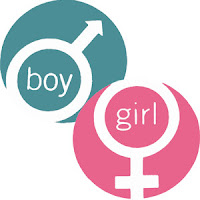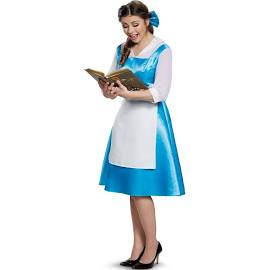Fired Up Fourth Graders (Oh, What Fun!)
 "Beyond Pink and Blue: Fourth graders get fired up about Pottery Barn's gender stereotypes"
"Beyond Pink and Blue: Fourth graders get fired up about Pottery Barn's gender stereotypes"
by Robin Cooley
Upon initially reading the title for this article, I thought that it would momentarily touch on the way commercial stores and other forms of media relegate specific colors to specific genders. I did not expect, however, the author to take the reader along with her students and her as they began to challenge the basic gender stereotypes present in society.
As I flipped towards the article, I found myself wondering, "What could Cooley have to add and supplement to this discussion?" Since high school, I have been aware of the conversations individuals everywhere are having about raising gender neutral children, starting while the children are still even in the womb by not selecting stereotypical gender colors (by which I mean pink for a girl, blue for a boy). Many people had broached this topic before, but I had not heard anything additive that would force us to evaluate and change the way we see gender at a most basic level.
That was, until I read Robin Cooley's article.
Once I finally started reading, I realized that Cooley's students getting "fired up about Pottery Barn Kids' gender stereotypes" (reminder: they're fourth graders, and 4th graders tend to get riled up about a lot of things...) was the culmination of the literacy work that Cooley had been working on throughout the year with her students. This is what every teacher dreams of-- the time when the students experience the topic in their own lives and finally "get it!" And not because the teacher forces them to, but because they have a true interest in calling out and challenging those stereotypes.
The gender stereotype was just one of the stereotypes that Cooley's class had been studying; they were also working to debunk the "family stereotype," and I found Cooley's approach to be ingenious. It was so simple, so developmentally appropriate (and better yet accessible) for her students. How? Read a-louds. I know many teachers who use read alouds to teach part of the literacy or writing curriculum (or even as a quick five minute filler when the kids just need some "quiet time"), but here, I saw Cooley doing what I have always wanted to do and attempt in my own classrooms.
Better yet, Cooley did not just leave us with some read aloud titles that conflict with the stereotypes of gender and family. Instead, she told us what she did next, and (my favorite part) how she incorporated the younger students into this learning by forming partnerships between a first and fourth grader to unravel the stereotypes and teach the school community by writing the Everyone Should Know That... book, demonstrating how powerful this curriculum can be. Her work made me think of the conversation in class on Monday when it was determined that we need to challenge individuals to think more about the "why" and "so what" that certain messages have on our society.
Cooley's students took it upon themselves to write letters to Pottery Barn Kids explaining the way they reinforced the gender stereotypes, and they even offered suggestions about how to change it. While the changes were minute ("the catalog sort of improved the boys, but not really the girls," one student remarked), it was one step in the right direction. This does not mean that we can be complacent with these stereotypes. These stereotypes will only continue to perpetuate the stereotypes that we discussed in class as portrayed by Disney where young girls should aspire to be "princesses waiting for Prince Charming" (forget a personality) and young boys should be bold, courageous, and extremely handsome (we'll even excuse his arrogance).
If nothing else, Cooley and her students conclude that they have "made you stop and think" about how you're reinforcing certain stereotypes and challenging you to use your power to make a difference in the world because we all can. Even nine and ten year olds. I think Ellen would agree (hope you're not sick of her yet).



I love the idea of using read alouds to teach concepts to kids, especially at the early grades. This was one of the chapters that I almost read tonight but it didn't grab my attention in the first few lines; however, after reading your blog I am intrigued and will definitely revisit it to learn more.
ReplyDeleteI love the video and graphic you included in your blog. Both helped clearly illustrate your point to the reader in an engaging way!
ReplyDeleteI love read-clouds and read-aloud-plus even with adults but I had never thought of using them in this way. Great post.
ReplyDelete